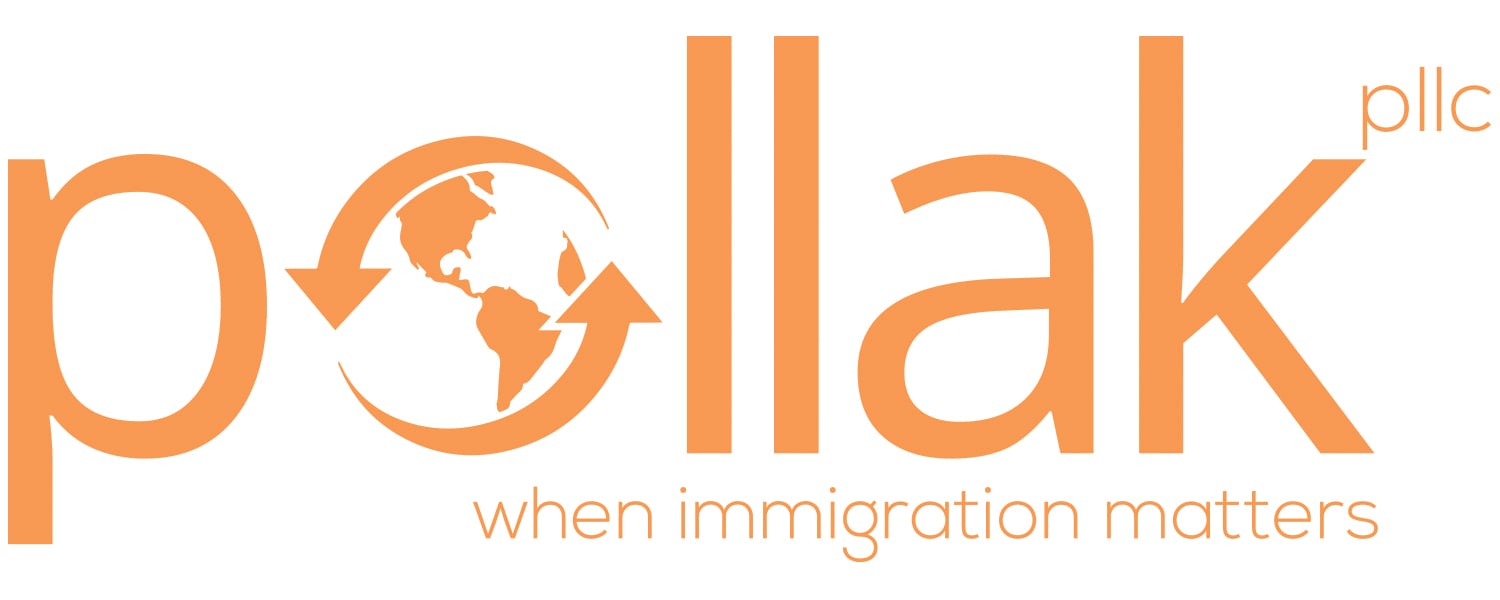For professionals on H-1B visas, the path to permanent residency often involves years of waiting in employment-based backlogs. These delays—particularly severe for nationals of countries like India and China—can make the green card process feel out of reach. The EB-5 Immigrant Investor Program offers an alternative.
By investing in a U.S. enterprise that creates jobs, eligible H-1B holders can pursue a more direct path to permanent residency. But making this transition requires strategic legal coordination. Timelines, documentation, and visa category interplay must be managed carefully to avoid status gaps or missed opportunities.
Why Experienced Guidance Matters in Complex Visa Transitions
Transitioning from H-1B to EB-5 isn’t just about having the capital. It’s about aligning two very different immigration categories—one employer-dependent, the other investment-based—without creating legal exposure or breaking continuity of status.
Dual-Track Planning Requires Legal Precision
Pollak PLLC brings more than 27 years of experience in employment-based and investor immigration. The firm routinely advises H-1B professionals on how to initiate EB-5 filings without interrupting their current visa, navigate employer changes, and pursue concurrent filings when possible.
Every Strategy Is Tailored to the Individual
Some clients are nearing the end of their sixth H-1B year. Others are early in the process but want an alternative to EB-2/EB-3 wait times. Pollak PLLC adjusts each plan based on career trajectory, immigration history, and country of origin.
Understanding Dual Intent and Status Preservation
One reason EB-5 is accessible to H-1B holders is that H-1B allows “dual intent.” You can pursue a green card without violating your nonimmigrant status.
As long as your H-1B employment remains valid, USCIS will not view an EB-5 petition as a contradiction. This allows professionals to invest, file Form I-526, and continue working while their petition is under review.
Pollak PLLC ensures each client’s status remains compliant throughout the process, from initial investment to green card approval. If your job changes, your employer folds, or your visa nears expiration, the firm adapts your immigration strategy accordingly.
Investment Timing While on H-1B Status
EB-5 timelines are not always predictable. That’s why timing matters—especially when your H-1B status has a fixed expiration date. A delay in planning can lead to status gaps, missed filing windows, or unnecessary time spent outside the U.S. while your petition is pending.
Start Before You Run Out of Time
Ideally, H-1B workers should begin EB-5 planning well before their sixth year ends. Gathering financial records, securing capital, and selecting a qualifying investment can take months. The I-526 petition itself requires extensive documentation, including evidence of lawful source of funds, business plans, and job creation forecasts. Rushing this process often leads to errors or omissions that result in costly delays or Requests for Evidence (RFEs).
Pollak PLLC helps clients get ahead of these issues by building a realistic preparation timeline. For many, the optimal time to begin planning is during the fourth or fifth year of H-1B status—well before visa limits begin to restrict options.
Anticipate Gaps Between Petitions
Even if an I-526 is filed, you may not be eligible for adjustment of status until your EB-5 priority date is current. This can create a gap between your H-1B expiration and your eligibility to file Form I-485. Pollak PLLC helps bridge the gap—whether through timely H-1B extensions, concurrent filings, or change-of-status alternatives. Early strategy sessions allow for backup planning that protects your ability to remain in the U.S. lawfully during this waiting period.
Consider the Role of Visa Bulletin Timing
The timing of your EB-5 filing may also be influenced by the Visa Bulletin. Even if your I-526 is approved, no further progress can be made until a visa number becomes available for your country. Pollak PLLC tracks movement in the EB-5 visa category and advises clients on how to align their investment and filing schedule with the latest availability projections—ensuring you don’t miss critical windows or overstay your current status.
Loan-Based Investments: What H-1B Workers Need to Know
Not every investor has cash on hand. Many use loans—secured by homes, savings, or personal assets—to meet the EB-5 investment threshold. This is permitted, but it must be structured carefully.
Secured Loans Must Be Lawful and Transparent
USCIS requires detailed documentation proving that the loan is secured by the investor’s assets and that the funds were acquired legally. Mortgage statements, bank ledgers, and notarized loan agreements are often required.
Family Gifts and Inheritances Are Acceptable—With Proof
Funds from family can also qualify, but the origin of the donor’s money must be documented. Gift affidavits alone are not enough—Pollak PLLC ensures the paper trail satisfies USCIS expectations.
Concurrent Filing: When and How to Use It Strategically
If your priority date is current, concurrent filing may allow you to submit Form I-485 (Application to Register Permanent Residence or Adjust Status) at the same time as your EB-5 petition (Form I-526). For many H-1B holders, this option provides critical flexibility during a transitional period.
Key Benefits of Concurrent Filing
Concurrent filers can receive an Employment Authorization Document (EAD) and Advance Parole (AP) for international travel while their green card application is pending. This helps reduce reliance on H-1B renewals and mitigates risks if there are changes in employment or delays in visa processing. For individuals nearing the end of their six-year H-1B limit, concurrent filing can offer a timely solution to maintain lawful presence and work authorization.
Additionally, concurrent filing can create more flexibility for family members. Derivative beneficiaries, such as spouses and children, may also apply for EADs and Advance Parole under the same I-485 filing, giving the entire family greater stability during the adjustment process.
Understanding Eligibility and Timing
Concurrent filing is only available when a visa number is immediately available for the EB-5 category under the applicant’s country of chargeability. Pollak PLLC monitors the Department of State’s Visa Bulletin each month and advises clients on when concurrent filing is possible based on their priority date and the current cutoff.
Timing is crucial. Filing too early—before a visa number is available—can result in USCIS rejecting the adjustment application. Filing too late can create avoidable status pressure. Pollak PLLC ensures that filings are correctly timed, all forms are properly assembled, and that supporting documentation aligns with both the I-526 petition and I-485 requirements.
Comparing EB-5 to EB-2 and EB-3 Paths
H-1B workers often weigh the EB-5 program against more traditional employment-based green card options—namely EB-2 and EB-3. Each path has its own advantages, risks, and timing considerations. Choosing the right option depends on your career goals, financial readiness, and how long you're willing to wait.
PERM Labor Certification: A Long and Rigid Process
Both EB-2 and EB-3 require PERM labor certification, a time-consuming process overseen by the U.S. Department of Labor. Employers must prove that no qualified U.S. workers are available for the offered position, which involves precise job descriptions, recruitment advertisements, and prevailing wage determinations.
This process alone often takes 12 months or longer, even when executed efficiently. If the employer decides to withdraw support, the entire petition may be rendered void. Pollak PLLC regularly counsels clients whose PERM-based strategies stall due to employer complications or changes in employment.
The Impact of Country-Based Backlogs
Nationals of countries like India and China face significantly longer wait times under EB-2 and EB-3 due to annual green card quotas. Even with an approved I-140, applicants may have to wait several years before they can file Form I-485. These delays can result in prolonged reliance on H-1B status and introduce greater uncertainty for long-term planning.
Pollak PLLC helps clients understand how the Visa Bulletin affects their wait times and evaluates whether remaining in the EB-2/EB-3 queue is strategically viable or unnecessarily limiting.
EB-5 Offers Flexibility and Independence
The EB-5 program bypasses many of the bottlenecks associated with traditional employment-based immigration. It does not require PERM labor certification or employer sponsorship. For H-1B professionals with the required investment capital, EB-5 offers a more self-directed path to permanent residency.
Investors can choose qualifying projects, set their own timelines, and proceed without being dependent on continued employer cooperation. In some cases, EB-5 may even result in a faster green card—especially for nationals facing severe EB-2 or EB-3 retrogression.
Pollak PLLC assists clients in comparing both routes, taking into account country-specific backlog data, investment readiness, and long-term immigration goals. For some, EB-2 or EB-3 may still be the best fit. For others, EB-5 offers a practical way to accelerate the process and regain control of their future in the United States.
Start Your Transition With Pollak PLLC
Transitioning from H-1B to EB-5 is more than a change in visa classification—it’s a shift in long-term immigration strategy. It allows professionals to step out of the employment-based backlog and take greater control over their path to permanent residency.
Pollak PLLC helps H-1B workers structure EB-5 investments, build robust petitions, and maintain full compliance throughout the process. From source-of-funds planning to final I-829 approval, the firm provides the strategic insight and hands-on support that complex immigration cases require.
To explore whether EB-5 is right for you, contact Pollak PLLC online today. Legal services are available in English, Spanish, and other languages upon request.
Pollak PLLC is an award-winning immigration law firm with offices in Dallas, Texas, and Fort Lauderdale, Florida. Contact us at info@pollakimmigration.com or call 214-307-5510 today to schedule a consultation to discuss your options. You can also see updated information on our Pollak PLLC Facebook page.


-4.png)
